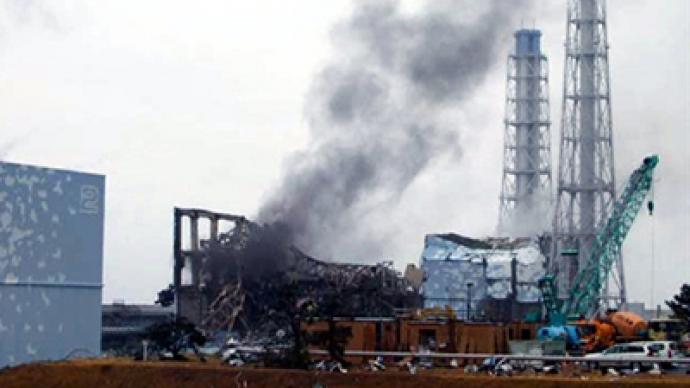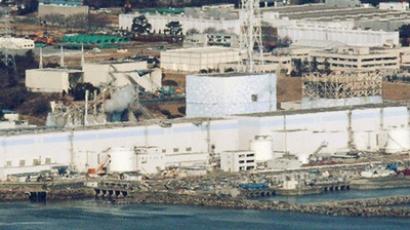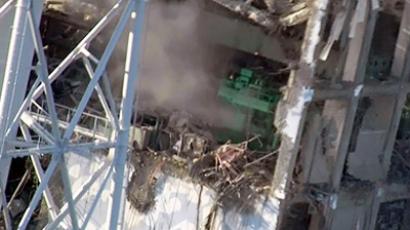Radiation level at Fukushima exceeds norm 1,600 times – IAEA

Work has resumed at the Fukushima power plant after it was interrupted for the second time in 24 hours. Restoration work has been underway at the facility to deal with damage caused by the tsunami.
Columns of white smoke were seen hovering over two units of the facility earlier on Tuesday. Both equipment repair and restoration work have been temporarily shut at the facility, Itar-Tass news agency reports.A similar incident occurred on Monday, when restoration work was suspended due to detection of smoke over the second and third units at the facility.Fukushima workers managed to connect the first and the fourth reactors of the plant to an external power source to help restore the cooling system at the units. Five of six units of the Fukushima plant have now been connected to emergency diesel generators, Kyodo news agency reported.However, the electricity supply to the problematic third unit has yet to be switched back on.David Lindorff, investigative journalist and founding editor of the online newspaper This Can’t Be Happening explains why it is still impossible to prevent such disasters, with all the work that is going into the development of peaceful nuclear energy:“I hear people say it’s possible to design these days a safe nuclear plant that has all passive cooling systems, so that if all the power fails you still can keep the plant from going into the meltdown phase – and maybe that’s true – but you have to take all the existing plants and shut them down. They are not salvageable.And I think that the main thing is that the cost of these things to make them safely is so enormous, requires so much government subsidy and taxpayers’ subsidy, that they really are not economical and don’t make any sense,” Lindorff added.
The International Atomic Energy Agency announced on Tuesday that the level of radiation within 20 kilometers from the Fukushima facility exceeds the norm 1,600 times.Authorities are said to be monitoring radiation in the seawater and environment surrounding the nuclear plant. Residents of a village near the site have been supplied with bottled water after officials said tap water was contaminated.The death toll of people killed in the earthquake and tsunami that hit the country on March 11 exceeded 9,000 on Tuesday, the National Police Agency said. Over 13,000 people are still missing. Another 270,000 have been displaced, including evacuees from the area in Fukushima Prefecture surrounding the nuclear power plant which suffered tsunami damage. The evacuees are now being housed in about 1,900 shelters covering 16 prefectures.
Nagasaki residents worried over Fukushima destiny
Yoshiro Yamawaki has borne the scars of nuclear disaster for most of his life. As a resident of Nagasaki, Yoshiro has had liver and kidney problems since he was 35, and he has already beaten cancer twice.Every time he falls ill now, he fears it could be his last battle. Yoshiro watches events unfold at Fukushima, fearing the true nature of the disaster is yet to show itself."The result of the contamination will not just end after the event,” he said. “It will be handed down from generation to generation.””I have four daughters, the first two have leukemia, another has breast cancer. The results of a disaster will be shown in generations to come," Yoshiro Yamawaki added.Yoshiro was just 11 when the bomb was dropped. He survived the blast but was exposed to lethal levels of radiation on his two trips to the hypocenter: first to find his father, then to bury him. Despite everything, he is pro nuclear power, but still thinks fleeing Fukushima is the wise thing to do."I do not think the public or the government are overreacting in this situation,” he said. “I think people must take all precautionary measures they can to avoid the worst."The Nagasaki that stands today had to be built from scratch: 11 square kilometres were reduced to dust. The cloud of its tragic past still hangs over the city. Its residents, though, know what it means to suffer, and are willing to help those in need.Members of the international volunteer organization, The Lions Club, based in Nagasaki, are now busy collecting aid for the victims of the earthquake and tsunami. Everyone is desperate to give with donations, already ten times higher than normal."We have a custom that when something happens in our nation we collect donations and we help each other especially the people in Nagasaki,” said the club activist Tsutomu Tomioka. “We are very sensitive to atomic power. So we are very worried about what happened in Fukushima and we want to help."Everywhere you turn in Nagasaki there is a memorial to the 75,000 who died when the bomb was dropped. The town will forever serve as a reminder of the destructive potential of nuclear power. Its people are now praying Fukushima is not remembered in the same way.Nagasaki's transformation has been remarkable. Ground zero is unrecognisable. The city would not be affected by radiation from a meltdown at Fukushima, but there is a nuclear plant close by and the incident has left residents living in fear."We have never experienced such a devastating nuclear accident before, and I think everyone is now afraid of this could happen again,” said director of Nagasaki Peace Memorial Yusushi Oba. “I was not afraid of nuclear accidents before but now I am because I can see it is not under control."














